ROSWELL (Day 4 - part 1)
After a yummy, massive breakfast at the hotel, we set out early along the Turquoise Trail. Considered a National Scenic Byway, Turquoise Trail is a 65-mile back road between Santa Fe and Albuquerque. It gets its name from the rich deposits of turquoise found in the area. The road was used by Native Americans and Spanish explorers long before the prospectors and large coal mining companies arrived in the 1800’s.



While we certainly enjoyed the lovely scenic drive, our goal was actually the tiny town of Madrid (pronounced both MA-drid and also Ma-DRID, depending on who you ask).
The town was founded in 1869 but boomed in the 1880’s with the discovery of coal. Mines, with shafts as deep as 2,500 feet, supplied both hard and soft coal (which is apparently a rare phenomenon and found in only two other mines in the world). The main customer was the Santa Fe railroad. But when diesel replaced steam engines and natural gas became more popular for heating homes, the demand for coal declined. By the 1950's, almost all the residents of Madrid had moved away.
In the early 1970's, however, the town was revitalized into an artist community. The main focus is naturally on the beautiful gems and stones that come from the surrounding hills.

The main (and basically only) street. At its peak, this town was home to over 3,000 people (which was more than in Albuquerque at the time!)

Stores opened at random times and seemed very flexible.





In the left of the photo is a New Mexico Agave. It only blooms once in its life (which ranges from 8 - 20 years) during which it sends up an extremely tall flower stalk!

Traditional southwest imagery. A Ristra is a string of fresh or dried red chili (or chile... as it is spelled down here). Hot peppers are a major ingredient in the local cuisine.

An old piece of equipment becomes art.
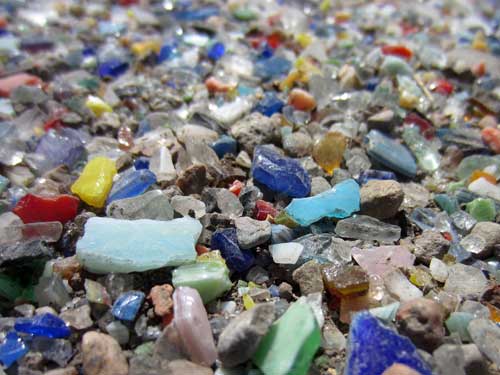
Brightly colored pieces of glass mixed in with the gravel driveways.

A typical jewelry store

A collection of beautiful stones... turquoise (light blues), lapis lazuli (dark blue), coral (red), spiny oyster (orange), onyx (black), opal (white) and many more.

The Cerrillos Turquoise Mines (located just a few miles from here) are the oldest and largest prehistoric mines in North America. Mining activity dates back to around 500 A.D. Called 'Sky Stone," this turquoise was considered more valuable than gold or silver and was used extensively in trading. The Spanish conquistadors even sent it back to Spain to be used in the crown jewels.

A group of passing motorcyclists stop outside of Maggie's Diner.
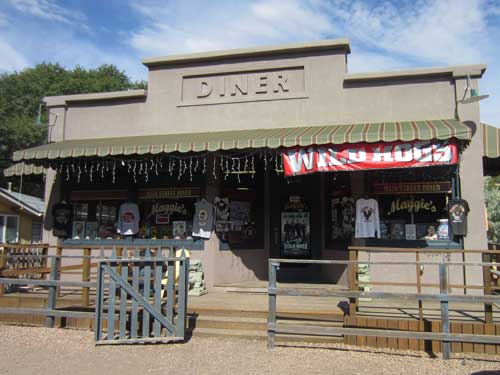
Maggie’s Diner was actually a movie set built for the 2007 film "Wild Hogs." After filming was done, the building was left to the town where it now serves as a souvenir shop, primarily with biker and movie-related items.

Several middle-aged friends go on a road adventure.


We returned to the main highway then set out for Roswell (about 200 miles away) through lovely New Mexico landscape.



A 'wild hog' that apparently got too wild!

A typical site in the southwest... crossings where flood rivers wash over the street.


Windmill are a common sight in cattle country. They pump water up from the ground into the troughs for thirsty bovine.



One of the biggest towns we passed through was Vaughn... although it wasn't very big (just a few hundred people) and much of it was abandoned and run down.
But apparently it wasn't always like this. In the 1880's, it was a resting place during drives along the Stinson Cattle Trail. Some 20,000 cattle would be brought up from Texas to homesteads and forts in east-central New Mexico. Named after Major G.W. Vaughn (an engineer for Atchison, Topeka and Santa Fe Railway), the town became a huge railroad hub in 1907. It had a large two-story depot, a roundhouse, and a Harvey House hotel (which closed in 1936). Charles Lindbergh even stayed here once in 1928... but only because engine failure forced him to land his plane and wait for replacement parts.



We arrived at Roswell in the late afternoon, where we checked into our hotel and took a short break before heading back out.

Roswell was another watering place for the Pecos Valley cattle drives of the 1870's and 80's. It became a city in 1891. But its claim to fame isn't cows... it's aliens. 'Little green men' covered the city in the form of signs, statues, paintings, brochures, etc.

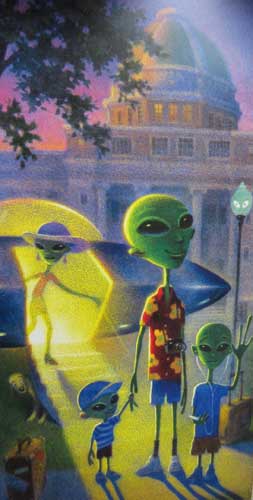


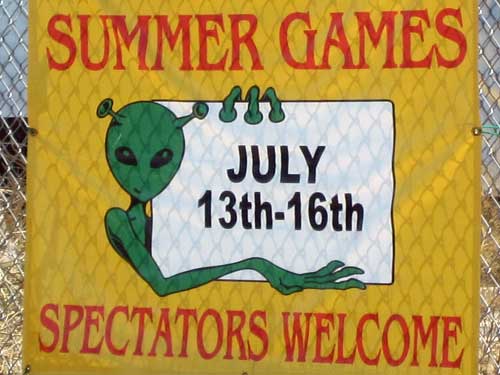

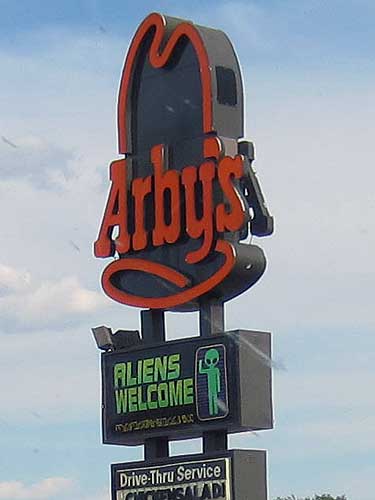


Our home for the night
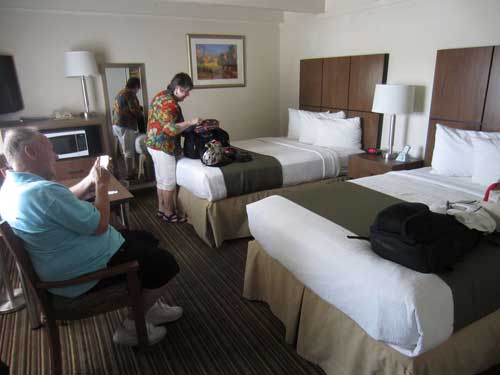
return • continue

